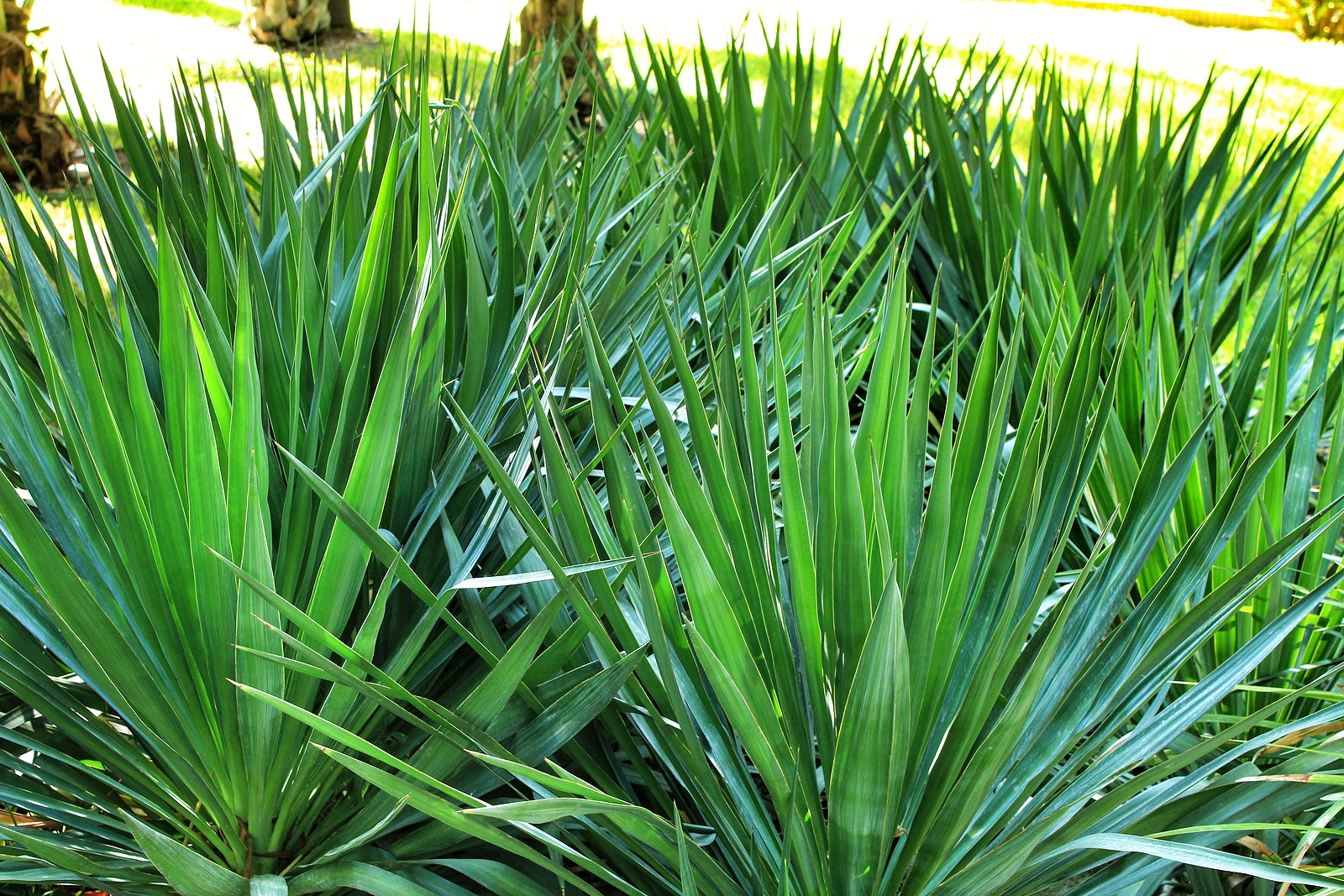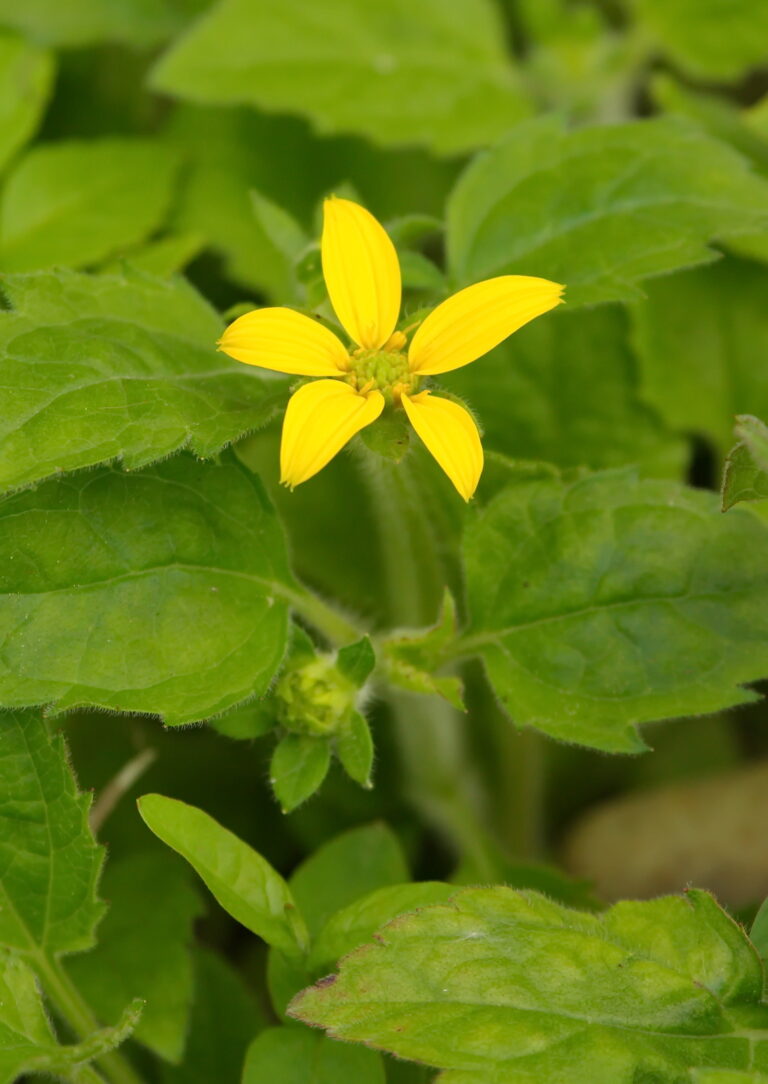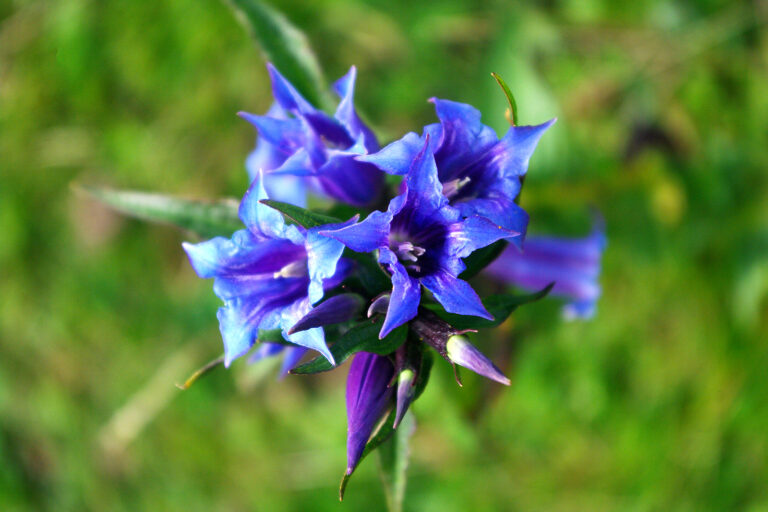How to Grow Yucca
Yuccas are rosette-forming or woody-based perennials or evergreen shrubs. They are cultivated for their bold, linear to lance-shaped leaves that are commonly erect. In their native habitat, some Yucca species are capable of growing to 40 feet, but indoors, Yucca is a slow grower and usually won’t grow more than 6 feet (1.8 m) tall and 2 inches (5 cm) thick.
Yucca leaves are reminiscent of agave and aloe; they have needle-sharp tips and often serrated edges. Some Yucca are stemless; some have a woody, trunklike stem.
Yuccas can be used as architectural specimens in a border or courtyard or in a container. Some are hardy, some are not. Tender yuccas can be grown in a cool greenhouse or in a conservatory.
Yuccas bear pendant panicles of bell-shaped white flowers. Flowers are rare on indoor specimens.
Yucca is a genus of about 40 species of rosette-forming or woody-based perennials. Yuccas are native to hot, dry places such as deserts, sand dunes, and plains in North and Central America and the West Indies.
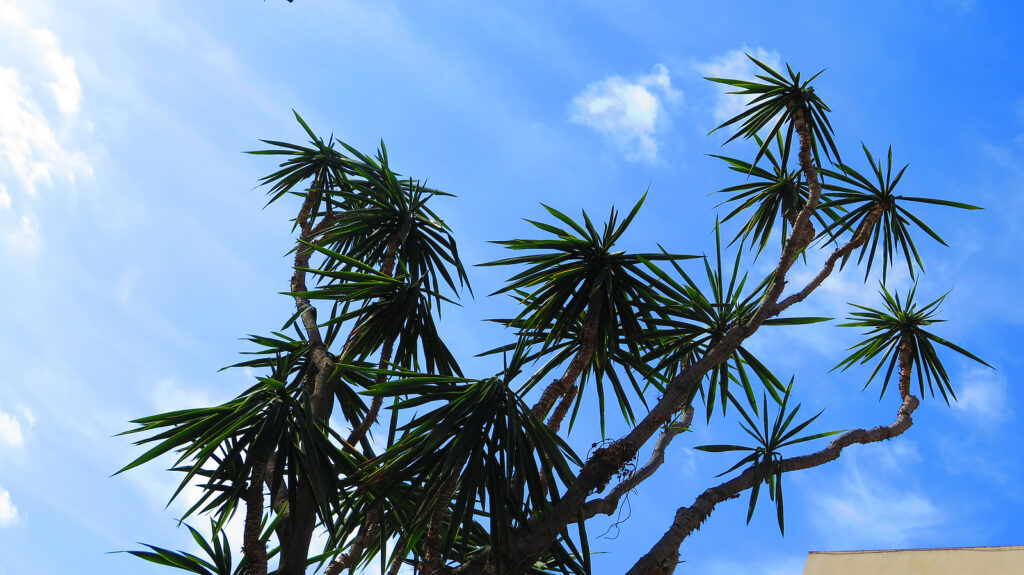
Get to know Yucca
- Plant type: Evergreen perennial
- Growing Zones and range: 4-10
- Hardiness: Hardy
- Optimal growing temperature: day, 70°F (21°C); night, 50° to 55°F (10° to 13°C).
- Height and width: 3 to 30 feet (1-10m) tall, 3 to 25 feet (1-8m) wide depending on the variety
- Foliage: Bold, linear to lance-shaped or inversely lance-shaped, neatly or loosely rosette leaves
- Flowers: Large flower spike with a candelabra of ivory bell-shaped blooms; flowers are borne on erect or pendent panicles
- Bloom time: Early to midsummer
- Uses: specimen plant
- Garden companions: low-growing junipers, ornamental grasses, Russian sage, brooms
- Common name: Yucca
- Botanical name: Yucca spp.
- Family: Agavaceae
- Origin: Deserts and plains in North and Central America
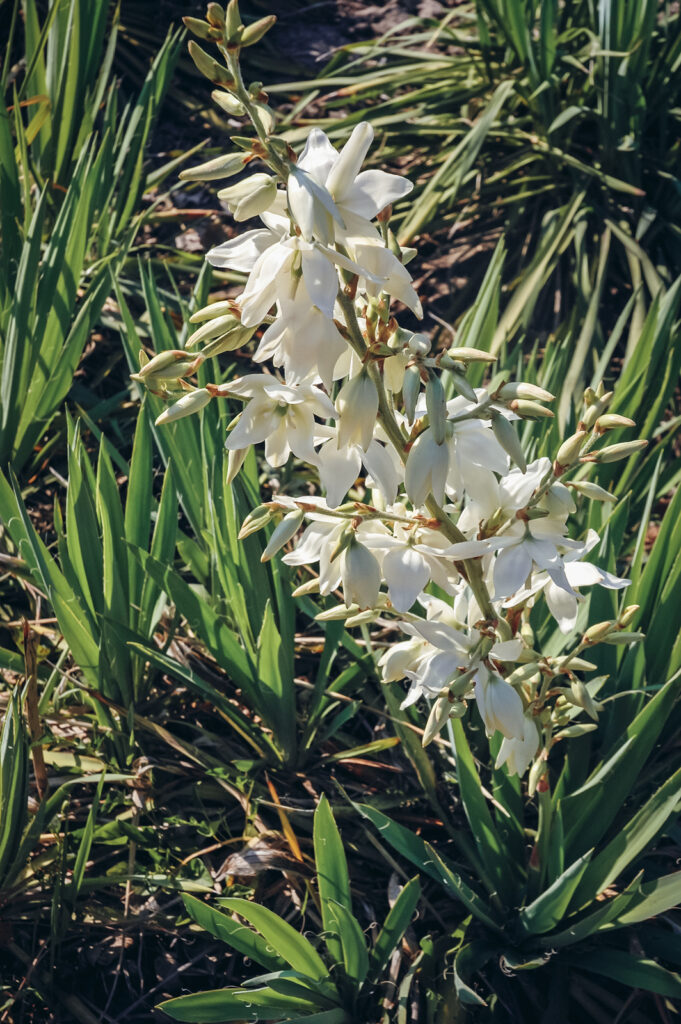
Where to plant Yucca
- Plant yucca in full sun.
- Indoors grow Yucca in bright light, with 3 hours of direct sun daily, from eastern, western, or southern exposure.
- Grow yucca in average to sandy, well-drained soil.
When to plant Yucca
- Set yucca in the garden in spring or fall.
Planting and spacing Yucca
- Space yucca 3 feet or more apart depending on the variety.
- Use gloves to handle plants that have sharp leaves.
How to water and feed Yucca
- Keep the soil around young plants just moist, not wet. Mature, established plants are drought-tolerant.
- Let the soil dry moderately between thorough waterings. Y. filamentosa should be kept somewhat drier.
- Yucca prefers humidity of 30% to 40%.
- Indoors, feed Yucca every 2 weeks during the growing season, with mild liquid fertilizer. Feed Y. filamentosa once in spring.
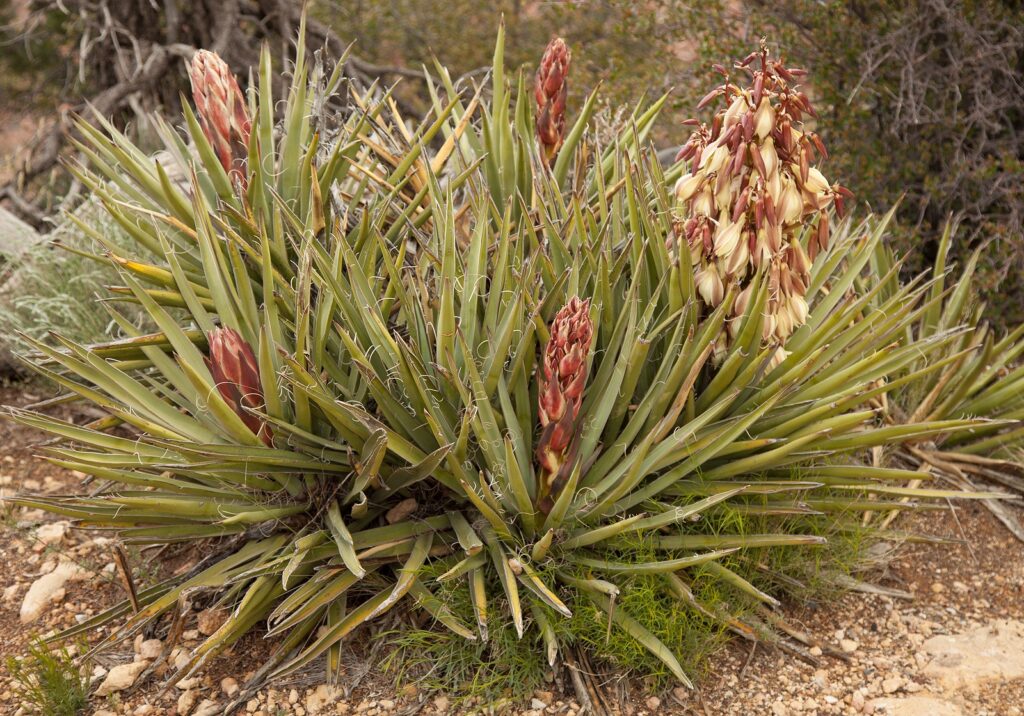
Yucca care
- Trim off spent flower stalks after blooming.
- Separate small plants that emerge around the base and replant them.
- Yucca is prone to root rot where the soil stays wet.
- Container-grown Yucca should be potted-on when roots completely overcrowd pot space.
- Yucca needs rest during winter. Keep indoor plants at 50°F (10°C) and give them just enough water to keep soil from drying out; withhold fertilizer.
Growing Yucca as a houseplant
- Yucca aloifolia, Spanish bayonet, and Y. elephantipes, spineless yucca, can be grown indoors.
- Yucca needs bright to direct light, an average temperature, good air circulation, and medium.
- Yucca can be placed outdoors in summer to stimulate growth, but it should be shaded from scorching sun, which can bleach the leaves.
- Allow the soil to dry between thorough waterings.
- Fertilizer can be applied monthly in spring and summer.
Yucca pests and diseases
- Cane borers, scale insects, and fungal leaf spots can occur.
Yucca propagation
- Sow the seeds of hardy yuccas in mid-spring; sow the seed of half-hardy species in late spring.
- Remove rooted suckers in spring.
- Take root cuttings in winter.
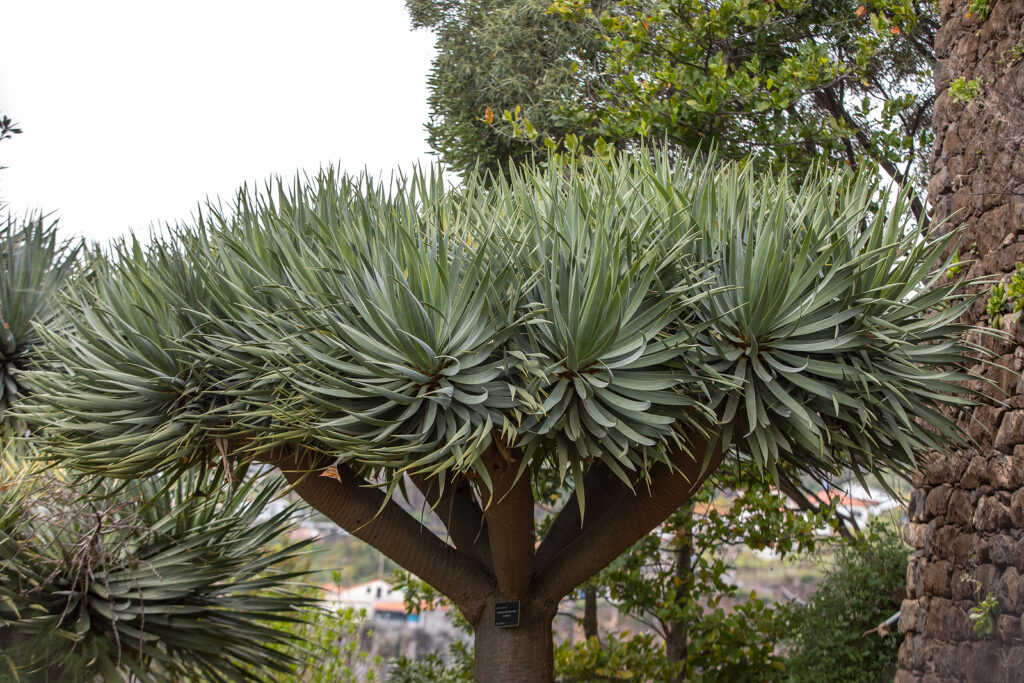
Yucca varieties to grow
- There are many species of yucca; some are modest perennials; some grow to the size of a tree.
- Yucca aloifolia (dagger plant, also called Spanish bayonet) Shrub or small tree with long, lance-shaped leaves; the plant can grow to 25 feet (8m) tall and 15 feet (5m) wide; there are several cultivars with yellow and white leaf margins.
- Yucca elephantipes (giant yucca, spinless yucca). Large upright shrub, rosettes of arching, soft and shiny leaves borne on a trunklike stem, sparsely branched; pendent white to cream flowers on erect panicles; the plant can grow to 30 feet (10m) tall and 15 to 25 feet (5-8m) wide.
- Yucca filamentosa, sometimes called Y. smalliana, is Adam’s needle. Stemless basal rosette of succulent, narrow leaves tapering at the ends and bearing curly threads on the margins; flower stalks that grow 5 to 7 feet tall and are hardy in Zones 4-11.
- Yucca gloriosa, called Spanish dagger, has pointed arching leaves; leaves grow to 3 feet long; bears bell-shaped sometimes purple-tinged white flowers in upright panicles to 8 feet (2.5m) tall.

